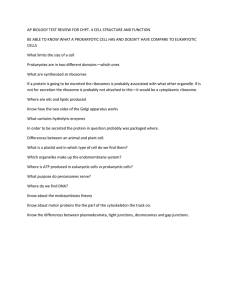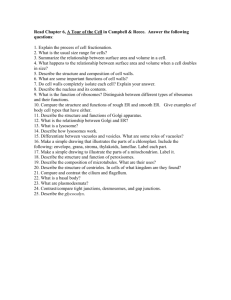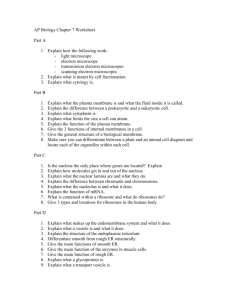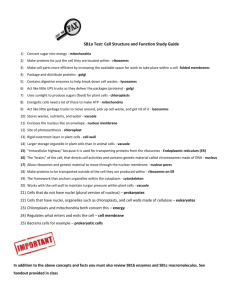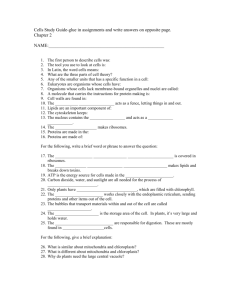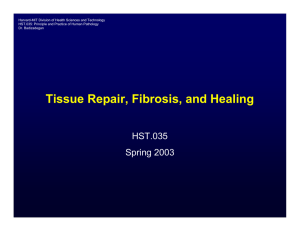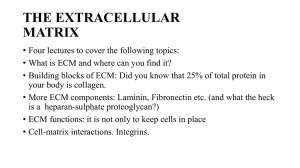SI Session 09/19/2014 Note: Know how to do molarity questions
advertisement
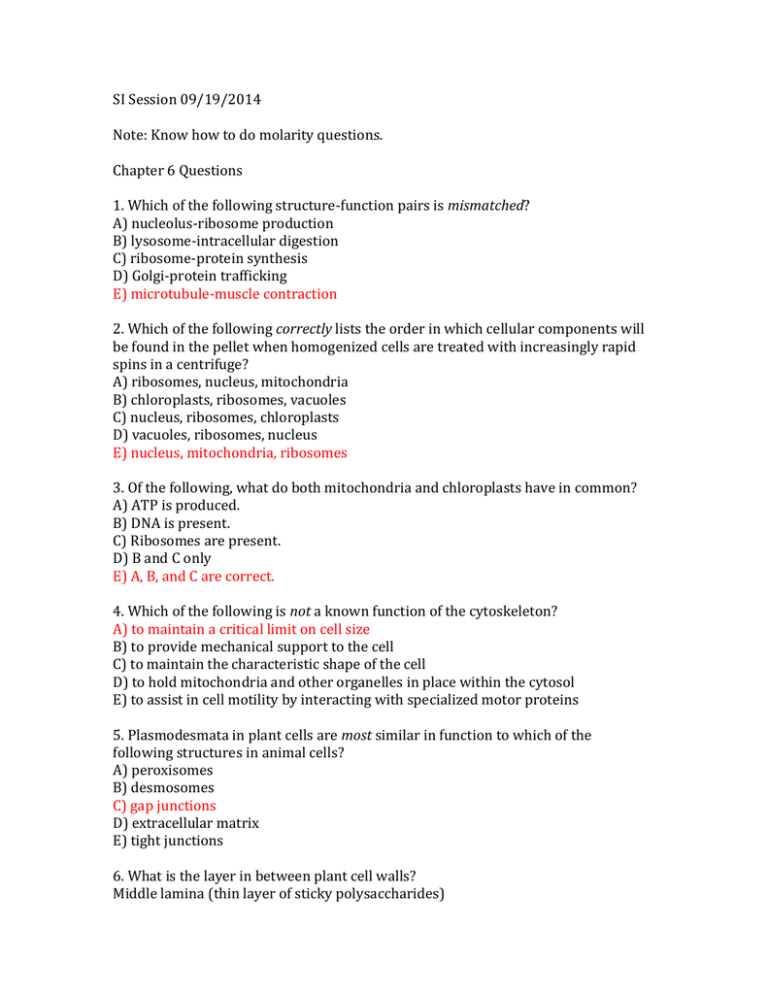
SI Session 09/19/2014 Note: Know how to do molarity questions. Chapter 6 Questions 1. Which of the following structure-function pairs is mismatched? A) nucleolus-ribosome production B) lysosome-intracellular digestion C) ribosome-protein synthesis D) Golgi-protein trafficking E) microtubule-muscle contraction 2. Which of the following correctly lists the order in which cellular components will be found in the pellet when homogenized cells are treated with increasingly rapid spins in a centrifuge? A) ribosomes, nucleus, mitochondria B) chloroplasts, ribosomes, vacuoles C) nucleus, ribosomes, chloroplasts D) vacuoles, ribosomes, nucleus E) nucleus, mitochondria, ribosomes 3. Of the following, what do both mitochondria and chloroplasts have in common? A) ATP is produced. B) DNA is present. C) Ribosomes are present. D) B and C only E) A, B, and C are correct. 4. Which of the following is not a known function of the cytoskeleton? A) to maintain a critical limit on cell size B) to provide mechanical support to the cell C) to maintain the characteristic shape of the cell D) to hold mitochondria and other organelles in place within the cytosol E) to assist in cell motility by interacting with specialized motor proteins 5. Plasmodesmata in plant cells are most similar in function to which of the following structures in animal cells? A) peroxisomes B) desmosomes C) gap junctions D) extracellular matrix E) tight junctions 6. What is the layer in between plant cell walls? Middle lamina (thin layer of sticky polysaccharides) 7. T/F Plants can have two cell walls. Primary & secondary 8. What is the most abundant glycoprotein in the ECM? collagen 9. What are proteoglycans? Core protein connected to many polysaccharides Tip: Know Figure 6.30 to be completely comfortable with ECM. 10. Know what fibronectin and an integrin is. Fibronectin connects ECM to the cell membrane integrins; integrins are cell membrane proteins; integrins are attached to the cytoskeleton on the cytoplasmic side and attached to fibronectins on the ECM side 11. Name the 3 cell junctions in animals. (Figure 6.32) Gap junctions (heart), tight junctions (stomach), and desmosomes (skin) 12. What’s the cell junction of plants? plasmodesmata Tips: The back of the chapter is ACTUALLY helpful this time around. 13. What model is most suitable for the cell membrane? Singer and Nicholson model (fluid mosaic model) 14. Talk about Figure 7.5. 15. Talk about fluidity of cell membranes. 16. Know all membrane proteins and functions. Transport, enzymatic activity, signal transduction, cell-cell recognition, intercellular joining, attachment to ECM and cytoskeleton 17. Diffusion?
